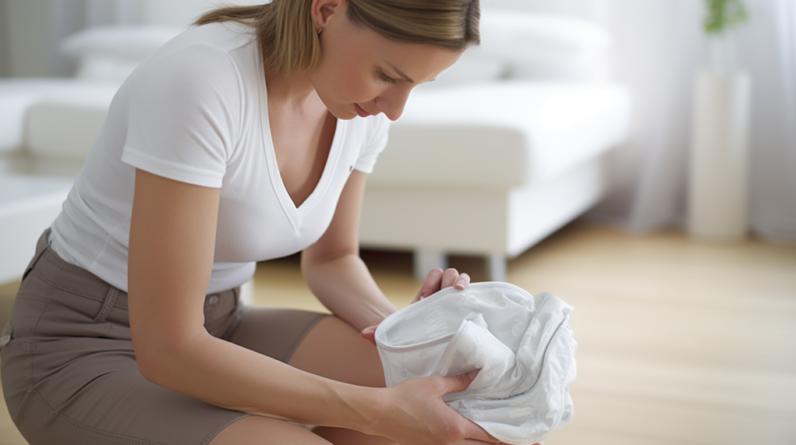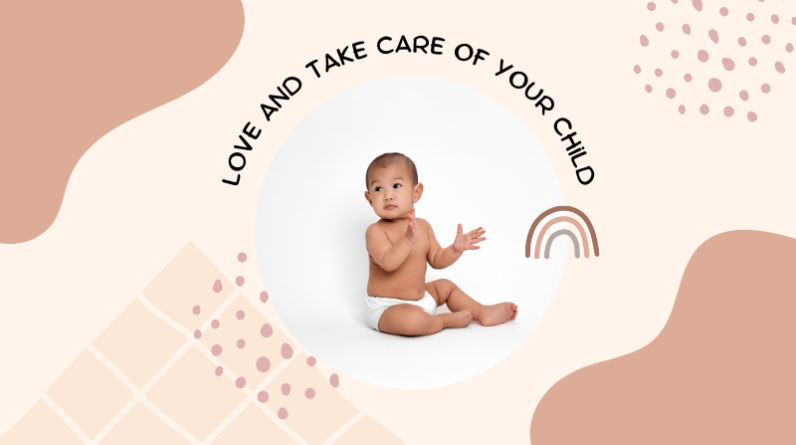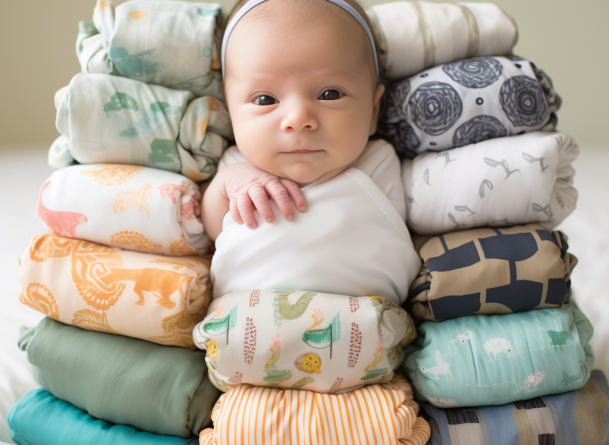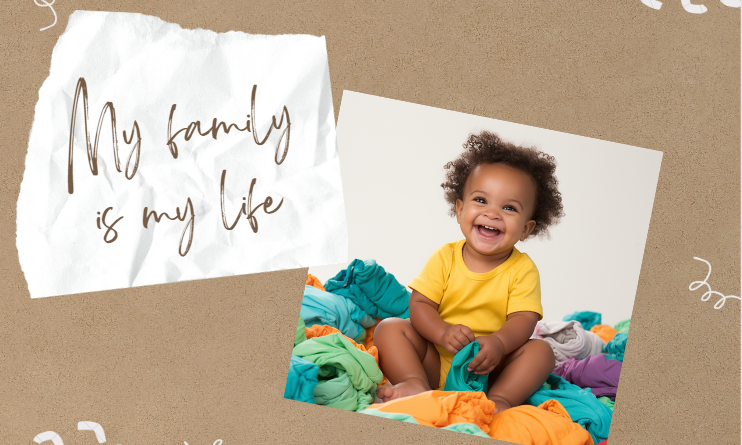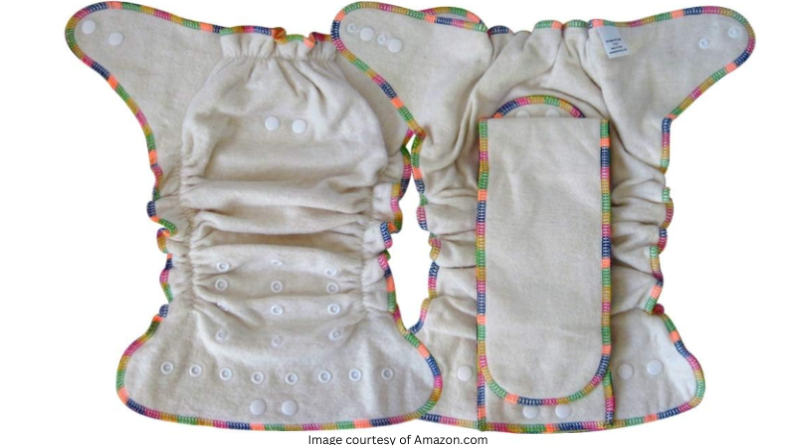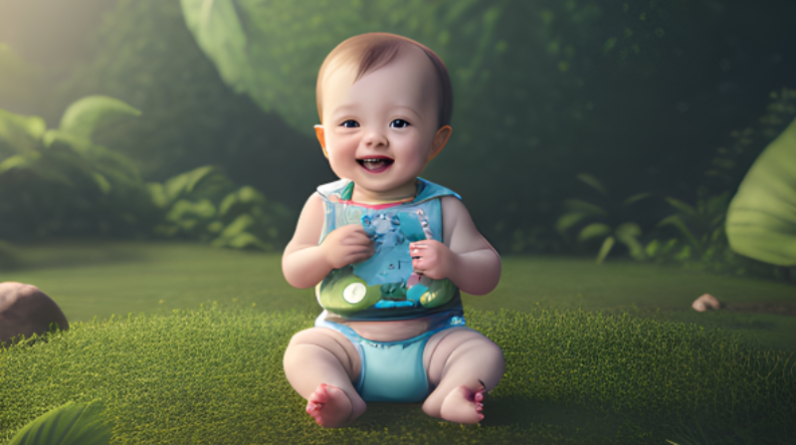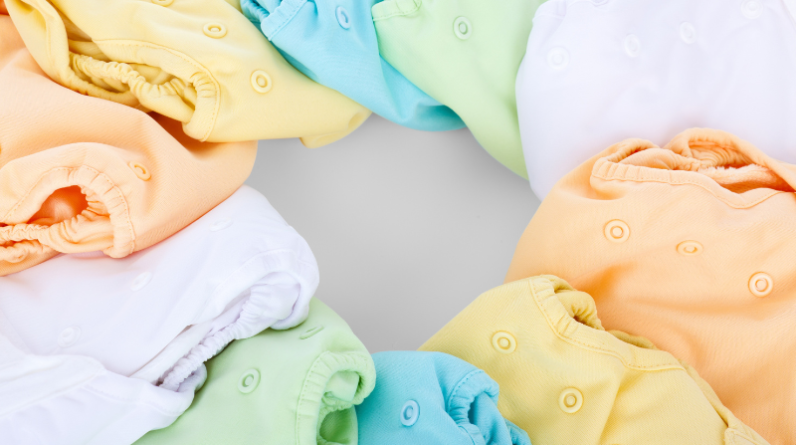
In today’s world, where environmental consciousness is on the rise, parents are increasingly seeking sustainable alternatives to everyday products, including diapers. Cloth diapers have been a trusted option for generations, offering a reusable and eco-friendly solution. Among the various types of cloth diapers available, pocket cloth diapers have emerged as a popular choice for parents who desire the convenience of disposable diapers without compromising on sustainability. This comprehensive guide will delve into the world of pocket cloth diapers, exploring their features, benefits, and practical usage, empowering parents to make informed decisions for their babies and the environment.
Overview of Cloth Diapers
Before delving into the specifics of pocket cloth diapers, it’s essential to understand the broader context of cloth diapering. Cloth diapers, in general, are reusable alternatives to disposable diapers. They are typically crafted from materials such as cotton, bamboo, hemp, or microfiber, known for their absorbent and breathable properties. Unlike their disposable counterparts, cloth diapers are designed to be washed and reused, significantly reducing waste generation. Within the realm of cloth diapers, there are various options available, including pre-folds, flats, fitted diapers, and all-in-ones, each with its own distinct characteristics and benefits.
Introduction to Pocket Cloth Diapers
Among the diverse range of cloth diapers, these types of cloth diapers stand out for their simplicity and practicality. It comprises a waterproof outer layer and a soft inner lining, creating a pocket-like opening in between. This pocket serves as a convenient space to insert an absorbent insert, which can be made of materials like microfiber, bamboo, or hemp. The pocket opening allows for easy insertion and removal of the insert, making pocket cloth diapers user-friendly and straightforward to maintain.
Benefits of Using Pocket Cloth Diapers
- Eco-Friendly: By choosing pocket cloth diapers, parents make a conscious decision to reduce their environmental impact. Disposable diapers contribute to staggering amounts of waste, taking hundreds of years to decompose in landfills. In contrast, pocket cloth diapers are reusable, significantly minimizing the amount of waste generated. By opting for a sustainable diapering option, parents contribute to a healthier planet for their children and future generations.
- Cost-Effective: While the initial investment in pocket cloth diapers may appear higher compared to purchasing disposable diapers, it is essential to consider long-term savings. Disposable diapers come with ongoing expenses as they need to be continuously replenished. In contrast, pocket cloth diapers involve a one-time investment that can be utilized for multiple children or resold once they have been outgrown. The cost-effectiveness of these type of cloth diapers becomes evident over time, making them an economically viable choice for budget-conscious families.
- Customizable Absorbency: They also provide a high level of flexibility when it comes to absorbency. The pocket design allows for easy customization by adjusting the number and type of inserts used. For babies who are heavy wetters, additional inserts can be added to enhance absorbency and prevent leaks. This adaptability ensures that parents can find the optimal balance between leakage prevention and their baby’s comfort, guaranteeing a dry and contented little one.
- Gentle on Baby’s Skin: The materials used in these diapers are often soft, breathable, and free from chemicals, fragrances, and plastics. This design choice minimizes the risk of diaper rash and skin irritations, making pocket cloth diapers an excellent choice for babies with sensitive skin. The natural and hypoallergenic properties of the materials ensure that the baby’s delicate skin remains healthy, irritation-free, and comfortable.
- Stylish Designs: Diapering can be an opportunity for self-expression and creativity. Pocket cloth diapers come in a vast array of colors, patterns, and designs, offering a chance for parents to showcase their personal style while caring for their little ones. From adorable prints to fashionable designs, pocket cloth diapers add a touch of excitement and individuality to diaper changes, making them an enjoyable and personalized experience for both parents and babies.
Understanding Pocket Cloth Diapers
What are Pocket Cloth Diapers?
Theay are a modern and versatile alternative to traditional cloth diapers. They are designed with a pocket opening where an absorbent insert can be inserted. The pocket is typically lined with a stay-dry material to keep the baby’s skin dry and comfortable. These diapers are reusable, adjustable, and offer customizable absorbency.
How do Pocket Cloth Diapers Work?
They work on a simple yet effective principle. The waterproof outer layer prevents leaks, while the inner lining keeps the baby’s skin dry. The absorbent insert, placed inside the pocket, soaks up the moisture. The pocket holds the insert securely in place, preventing shifting or bunching. When the diaper is soiled, the insert is removed, and both the pocket and insert are washed.
Components of a Pocket Cloth Diaper
These types of cloth diapers consist of three essential components:
1. Waterproof Outer Layer
The outer layer of a pocket cloth diaper is made from a waterproof material such as polyurethane laminate (PUL) or TPU (thermoplastic polyurethane). This layer prevents moisture from leaking out of the diaper, keeping clothes and surfaces dry.
2. Absorbent Insert
The absorbent insert is the core component of a pocket cloth diaper. It is typically made from materials like microfiber, bamboo, hemp, or cotton. The insert absorbs and holds the liquid waste, keeping the baby dry. Different materials offer varying levels of absorbency, and some inserts are designed to be more suitable for daytime or nighttime use.
3. Inner Lining
The inner lining of a pocket cloth diaper comes in direct contact with the baby’s skin. It is often made from a moisture-wicking fabric such as microfleece or suede cloth. The role of the inner lining is to draw moisture away from the baby’s skin, keeping it dry and minimizing the risk of diaper rash.
Different Types of Pocket Cloth Diapers
There are various types of pocket cloth diapers available to cater to different needs and preferences:
1. One-Size Pocket Cloth Diapers
One-size pocket cloth diapers are designed to fit babies from birth through their potty training years. They feature adjustable sizing options, such as snap-down rise settings or adjustable leg and waist closures. With their ability to grow with the baby, one-size pocket cloth diapers offer long-term cost savings.
2. Sized Pocket Cloth Diapers
Sized pocket cloth diapers come in different sizes to fit babies at specific weight ranges. These diapers provide a trimmer and more customized fit for newborns, infants, and toddlers. Sized diapers often offer a snug fit and are less bulky under clothing.
3. Snap Closures vs. Hook-and-Loop Closures
Pocket cloth diapers are available with different closure options:
a. Snap Closures
Snap closures use small plastic snaps to secure the diaper around the baby’s waist. They are durable, long-lasting, and less likely to wear out over time. Snap closures provide a secure fit and are less prone to accidental unfastening.
b. Hook-and-Loop Closures
Hook-and-loop closures, also known as aplix or Velcro closures, use hook-and-loop fasteners to secure the diaper. They offer a more customizable fit and are easy to put on and take off. However, hook-and-loop closures may lose their stickiness over time and require occasional maintenance.
Choosing the Right Pocket Cloth Diapers
When it comes to selecting, there are several factors to consider. In this section, we will explore the key aspects that can help you make an informed decision.
Factors to consider when selecting
1. Fit and sizing options
Achieving a proper fit is crucial for the comfort and effectiveness of pocket cloth diapers. Consider the following aspects when evaluating fit and sizing options:
- Adjustable sizing: Look for diapers that offer multiple size settings, such as snaps or adjustable elastic, to accommodate your baby’s growth.
- Weight range: Check the weight range specified by the manufacturer to ensure the diaper will fit your baby properly.
- Leg and waist adjustments: Diapers with adjustable leg and waist settings allow for a secure fit and help prevent leaks.
2. Material and fabric choices
The material and fabric of pocket cloth diapers play a significant role in terms of comfort, durability, and absorbency. Here are some options to consider:
- Outer layer: Look for a waterproof outer layer, typically made of materials like polyurethane laminate (PUL) or TPU (thermoplastic polyurethane), to prevent leaks.
- Inner lining: Consider diapers with soft, moisture-wicking inner linings, such as microfleece or suede cloth, to keep your baby dry and comfortable.
- Absorbent insert material: Common materials for inserts include microfiber, bamboo, hemp, or cotton. Each has its own absorbency levels and drying times.
3. Absorbency and leak protection
Absorbency is a critical factor when choosing pocket cloth diapers to keep your baby dry and prevent leaks. Consider the following:
- Number of inserts: Some pocket diapers come with one or two inserts for added absorbency. Determine your baby’s needs and choose accordingly.
- Insert material: Different materials offer varying levels of absorbency. Consider the diaper’s intended use (daytime, overnight) and your baby’s wetting patterns.
- Leg gussets: Diapers with leg gussets provide an extra barrier against leaks by creating a snug fit around the legs.
4. Ease of use and maintenance
Choosing pocket cloth diapers that are easy to use and maintain can make your diapering experience more convenient. Consider the following factors:
- Closure system: Decide between snap closures or hook-and-loop (Velcro) closures based on your preference and ease of use.
- Stuffing and unstuffing: Some pocket diapers require you to stuff the inserts into the pocket, while others have a flap opening. Consider your preference and convenience.
- Washing and drying: Look for diapers that are easy to clean and dry quickly. Check the manufacturer’s guidelines for washing instructions.
Popular pocket cloth diaper brands and their features
To help you get started, here are some popular pocket cloth diaper brands and their unique features:
- Anmababy
- Babygoal
- Charlie Banana
- Imagine Baby Products
- Kanga Care
- Mama Koala
- Ohbabyka
- Alva
- Nora’s Nursery
- HappyFlute
- CoolaPeach
- Miracle Baby
- Nearkoi
- Thank U Mom
- La Petite Ourse
- Trensom
- Oopiez
- Baby Quokka
- AnAnBaby
- Hi Sprout
- Lilbit
- Thirsties
- Rig n Gig Inc.
How to Use Pocket Cloth Diapers
Prepping Pocket Cloth Diapers Before First Use
Before using them for the first time, it’s essential to properly prepare them to enhance their absorbency and overall performance. Follow these steps to prep your pocket cloth diapers:
- Wash the Diapers: Start by washing the pocket cloth diapers in hot water without any detergent. This helps remove any manufacturing residues and prepares the diapers for maximum absorbency.
- Drying Inserts: If your pocket cloth diapers come with inserts, separate them from the diaper covers and dry them separately. Depending on the materials used, you may air dry or machine dry the inserts.
- Prepping Inserts: For natural fiber inserts like cotton or hemp, they typically require multiple washes to reach their full absorbency potential. Check the manufacturer’s guidelines for the specific number of washes required.
- Prepping Diaper Covers: If your pocket cloth diapers have waterproof covers, there’s usually no special prepping required. However, you can wash and dry them along with the inserts to ensure everything is clean and ready for use.
- Assembling the Diapers: Once the inserts and diaper covers are clean and dry, stuff the absorbent inserts into the pocket openings of the diaper covers. Make sure they fit properly without any edges or corners protruding.
Step-by-Step Guide to Using Pocket Cloth Diapers
Using pocket cloth diapers is a straightforward process that involves a few simple steps. Follow this step-by-step guide to ensure proper usage and a comfortable fit for your baby:
1. Putting on the Diaper
To begin, follow these steps to put the pocket cloth diaper on your baby:
- Prepare the Diaper: Ensure that the diaper is clean, dry, and assembled with the absorbent insert in place.
- Position your Baby: Lay your baby down on a changing surface and lift their legs gently, ensuring they are comfortable.
- Open the Diaper: Unfold the diaper cover and spread it flat, ensuring that the inner lining and absorbent insert are facing up.
- Place the Diaper Underneath: Slide the open diaper under your baby’s bottom, ensuring that the back of the diaper aligns with the back and the front is below the belly button.
- Pull up the Front: Lift the front part of the diaper up between your baby’s legs, making sure it covers their bottom completely.
- Secure the Diaper: Fasten the diaper securely using the closure system, whether it’s snaps or hook-and-loop fasteners. Ensure a snug fit without being too tight or too loose.
2. Adjusting the Fit
Achieving a proper fit is crucial for the comfort and effectiveness of the pocket cloth diaper. Follow these steps to adjust the fit:
- Elastic Waist Adjustment: If your pocket cloth diaper has adjustable waist elastics, ensure they are snug but not overly tight. This helps prevent leaks while providing comfort.
- Leg Opening Adjustment: Check the leg openings for a proper fit. Adjust the elastic around the thighs to create a gentle seal without leaving red marks or causing discomfort.
- Back Rise Adjustment: Examine the back of the diaper to ensure that it adequately covers your baby’s bottom and prevents any gaps.
3. Inserting the Absorbent Insert
The absorbent insert is the core component of pocket cloth diapers. Follow these steps to insert the absorbent insert properly:
- Pull Open the Pocket: Reach into the pocket opening of the diaper cover and pull it open, creating a space for the insert.
- Insert the Absorbent Insert: Place the absorbent insert into the pocket opening, ensuring it covers the necessary area for maximum absorbency.
- Position the Insert: Adjust the insert so that it lies flat and covers the entire absorbent zone of the diaper. Ensure it is not sticking out or causing discomfort.
4. Removing and Cleaning the Diaper
When it’s time to change the diaper, follow these steps for removing and cleaning the pocket cloth diaper:
- Unfasten the Diaper: Unfasten the closure system of the diaper, whether snaps or hook-and-loop fasteners, to open it up.
- Remove the Insert: Gently pull out the absorbent insert from the pocket opening, being careful not to touch any soiled areas.
- Store the Diaper: If you’re not washing the diaper immediately, place it in a designated diaper pail or wet bag to contain any mess and prevent odors.
- Clean the Diaper: When it’s time to wash the pocket cloth diaper, follow the manufacturer’s washing instructions. Typically, it involves a cold rinse followed by a hot wash with detergent and an additional rinse cycle.
- Dry the Diaper: After washing, air dry or machine dry the pocket cloth diaper according to the manufacturer’s recommendations. Avoid using high heat settings, as they may damage the diaper.
Tips for Maintaining Pocket Cloth Diapers
Washing and Drying Pocket Cloth Diapers
Proper washing and drying techniques are essential for maintaining the performance and longevity of pocket cloth diapers. Follow these tips to ensure your diapers stay clean and fresh:
1. Prepping Before First Use
Before using pocket cloth diapers for the first time, it’s important to prep them properly. This involves a series of washes to increase absorbency and remove any manufacturing residues. Follow the manufacturer’s instructions for prepping, which typically involve multiple wash and dry cycles.
2. Handling Soiled Diapers
When it’s time to change a soiled diaper, dispose of solid waste in the toilet. You can use a diaper sprayer to rinse off any excess residue. If your baby is exclusively breastfed, the waste is water-soluble and can go directly into the washing machine.
3. Storing Dirty Diapers
Until you’re ready to wash the diapers, store them in a dry pail or wet bag. Make sure to remove the absorbent insert from the pocket to allow for thorough cleaning and quicker drying.
4. Pre-Washing and Main Wash
To start the washing process, do a quick pre-wash cycle with cold water to rinse off any remaining waste. Then, follow with a main wash cycle using hot water and a cloth diaper-safe detergent. Avoid using fabric softeners, bleach, or additives that can affect the absorbency and damage the fabric.
5. Drying Methods
Pocket cloth diapers can be dried in various ways:
a. Line Drying
Line drying is the most gentle and environmentally-friendly option. Hang the diapers in a well-ventilated area away from direct sunlight to prevent fading. Make sure the diapers are completely dry before storing them to avoid mold or mildew.
b. Machine Drying
If you prefer machine drying, set the dryer to a low or medium-heat setting. High heat can damage the waterproof layer and elastics over time. Adding dryer balls or clean tennis balls can help speed up the drying process and fluff the inserts.
6. Stripping Cloth Diapers
If you notice a decrease in absorbency or lingering odors, it may be necessary to strip your cloth diapers. Stripping involves deep cleaning to remove detergent buildup, mineral deposits, or residue from diaper creams. Follow the manufacturer’s instructions or seek guidance from cloth diapering communities for specific stripping methods.
Stain Removal Techniques
Stains are a common occurrence with cloth diapers, but they can be treated effectively. Here are some stain removal techniques to keep your pocket cloth diapers looking clean:
1. Sunning
One of the easiest and most natural ways to remove stains is sunning. After washing, hang the damp diapers outside in direct sunlight. The sun’s UV rays will help bleach out the stains. This method works particularly well on light-colored diapers.
2. Lemon Juice
For stubborn stains, you can use lemon juice. Mix equal parts of lemon juice and water, and then apply the solution to the stained area. Let it sit for a few minutes before rinsing thoroughly and washing as usual.
3. Stain-Removing Sprays
There are commercially available stain-removing sprays designed specifically for cloth diapers. Follow the instructions on the product for application and pre-treating stained areas. These sprays can be particularly effective for tough stains like those caused by diaper creams or solid foods.
4. Oxygen Bleach
If all else fails, you can try using oxygen bleach. It’s milder than chlorine bleach and safe for most cloth diapers. Dissolve the recommended amount of oxygen bleach in water and soak the stained diapers for a few hours or overnight. Rinse well and wash as usual.
Dealing with Diaper Rash and Skin Care
Proper diaper rash prevention and skin care are important aspects of maintaining your baby’s comfort and well-being. Consider the following tips:
1. Diaper Changing Routine
Change your baby’s diaper frequently to minimize the time spent in a soiled diaper. This helps reduce the risk of diaper rash and keeps the skin clean and dry.
2. Use Cloth-Safe Diaper Creams
When using diaper creams, choose cloth-safe options that don’t contain petroleum or zinc oxide. These ingredients can create residue buildup and affect the diaper’s absorbency. Look for cloth diaper-friendly creams that provide a barrier without compromising the diaper’s performance.
3. Natural Fiber Inserts
Consider using natural fiber inserts, such as cotton or bamboo, which are more breathable and can help prevent diaper rash. These materials wick away moisture from the baby’s skin, reducing the likelihood of irritation.
4. Diaper-Free Time
Allowing your baby to have some diaper-free time can be beneficial for their skin. Lay them on a waterproof mat or towel and let their skin air out. This helps to keep the diaper area dry and promotes healing if any irritation is present.
Troubleshooting Common Issues with Pocket Cloth Diapers
Despite proper maintenance, you may encounter some common issues with pocket cloth diapers. Here are some troubleshooting tips:
1. Leaks
If your pocket cloth diapers are leaking, consider the following possible causes:
a. Absorbency Issues
Ensure that the absorbent insert is adequately stuffed inside the pocket. Use additional inserts or boosters for heavy wetters or overnight use. Make sure the insert is properly centered and not causing gaps or compression leaks.
b. Fit and Elastic
Check the fit of the diaper around the baby’s legs and waist. Adjust the snaps or hook-and-loop closures to achieve a snug fit without being too tight. Inspect the elastic to ensure it hasn’t lost its elasticity. If the elastic is worn out, it may need replacement.
2. Smells
If your cloth diapers have a persistent odor, try the following:
a. Stripping
As mentioned earlier, stripping your diapers can help eliminate odor-causing residues. Consider stripping them if the smell persists even after regular washing.
b. Diaper Pail Maintenance
Make sure your diaper pail is clean and odor-free. Regularly wash and disinfect the pail to prevent odors from transferring to the diapers.
3. Diaper Fit Issues
If the diaper leaves red marks on your baby’s skin or doesn’t fit well, consider the following:
a. Sizing
Ensure that you’re using the correct size of pocket cloth diapers for your baby’s weight and age. Adjust the snaps or closures to achieve a comfortable fit without leaving marks.
b. Troubleshooting Elastics
Inspect the elastics for signs of wear or deterioration. If the elastics are causing discomfort or leaving marks, they may need replacement.
Cost and Environmental Benefits of Pocket Cloth Diapers
Cost Comparison: Pocket Cloth Diapers vs. Disposable Diapers
When considering the cost of diapering your baby, it’s important to compare the expenses associated with pocket cloth diapers and disposable diapers.
1. Initial Investment
Pocket Cloth Diapers: Pocket cloth diapers require an initial investment as you’ll need to purchase a set of diapers, inserts, and possibly additional accessories like liners or boosters. However, once you have an adequate supply, you won’t need to purchase diapers again unless you choose to expand your collection or replace worn-out items.
Disposable Diapers: Disposable diapers are readily available in stores, and you’ll need to continuously purchase them as you go. The cost of disposable diapers can accumulate significantly over time.
2. Long-Term Costs
Pocket Cloth Diapers: With pocket cloth diapers, the long-term costs are relatively low. Once you have built a stash of cloth diapers, you can reuse them for subsequent children or resell them, reducing the overall expense. You’ll primarily need to consider the cost of laundry detergent, water, and electricity for washing and drying the diapers.
Disposable Diapers: Disposable diapers come with ongoing costs. The price of disposable diapers can add up, especially when considering the number of diapers used per day and how frequently you need to restock them. This ongoing expense continues until your child is potty trained.
3. Cost-Saving Calculations
To estimate the potential cost savings of using pocket cloth diapers, consider the following factors:
- Number of diapers used per day
- The average cost of disposable diapers per diaper
- The lifespan of cloth diapers
- Water and electricity costs for washing
- Additional costs such as laundry detergent or diaper liners
It’s worth noting that the actual cost savings will vary depending on individual circumstances, but many parents find that pocket cloth diapers can be a cost-effective choice in the long run.
Environmental Impact of Disposable Diapers
Disposable diapers contribute significantly to environmental waste and pollution due to their single-use nature. Understanding their environmental impact can shed light on the importance of considering pocket cloth diapers as a more eco-friendly option.
1. Landfill Waste
Disposable diapers, once used, typically end up in landfills, where they can take hundreds of years to decompose. This contributes to the accumulation of non-biodegradable waste and occupies valuable landfill space.
2. Resource Consumption
The production of disposable diapers requires the consumption of various resources, including wood pulp, petroleum-based plastics, and energy. This extraction and processing of raw materials contribute to deforestation and greenhouse gas emissions.
3. Water Usage
The manufacturing process of disposable diapers involves significant water consumption, from sourcing materials to manufacturing and packaging. Additionally, the high water content in disposable diapers adds to the overall weight of waste in landfills.
4. Chemicals and Pollution
Disposable diapers often contain chemicals such as dyes, fragrances, and absorbent gels. These chemicals can potentially pose risks to both the environment and your baby’s health. Moreover, the improper disposal of disposable diapers can lead to water and soil pollution.
Savings and Environmental Benefits of Using Pocket Cloth Diapers
By opting for pocket cloth diapers, you can enjoy both financial savings and environmental benefits.
1. Cost Savings
Using pocket cloth diapers can result in significant cost savings in the long run. While there is an initial investment, the reusable nature of cloth diapers eliminates the need for continuously purchasing disposable diapers. By building a stash of pocket cloth diapers, you can save money on diapers throughout your child’s diapering journey and potentially for future children as well.
2. Environmental Sustainability
Pocket cloth diapers are a more sustainable choice for several reasons:
- Reduced Waste: By choosing reusable pocket cloth diapers, you contribute to minimizing the amount of waste that ends up in landfills.
- Lower Carbon Footprint: Cloth diapers have a lower carbon footprint compared to disposable diapers, as they require fewer resources to manufacture and generate less greenhouse gas emissions.
- Water Conservation: While washing cloth diapers consumes water, modern washing machines are designed to be efficient. Additionally, some cloth diapers are made from materials that reduce water usage during washing.
- Chemical-Free Option: Pocket cloth diapers offer a chemical-free alternative to disposable diapers, reducing the exposure of your baby’s delicate skin to potentially harmful substances.
3. Contribution to Sustainability
By choosing pocket cloth diapers, you actively participate in sustainable practices and contribute to a healthier environment for future generations. Additionally, you can inspire others to make eco-conscious choices by sharing your experiences and knowledge about the benefits of pocket cloth diapers.
In conclusion, pocket cloth diapers offer both cost savings and environmental benefits. By considering the long-term expenses and the impact on the environment, parents can make an informed choice that aligns with their values and priorities.
Frequently Asked Questions (FAQs)
Are Pocket Cloth Diapers Suitable for Newborns?
Pocket cloth diapers can be a suitable option for newborns. However, it is important to consider the size and fit of the diaper on your newborn’s delicate skin. Some pocket cloth diaper brands offer specific options designed for newborns with adjustable features and smaller sizing. It is recommended to look for diapers that have a snug fit around the legs and waist to prevent leaks and ensure comfort for your newborn.
How Many Pocket Cloth Diapers Do I Need?
The number of pocket cloth diapers you will need depends on various factors, including your baby’s age, how often you plan to do laundry and your personal preferences. As a general guideline, it is recommended to have around 12 to 24 pocket cloth diapers in your stash. This quantity allows for frequent changes and gives you flexibility in terms of laundry frequency. Keep in mind that newborns may require more diaper changes compared to older babies.
Can Pocket Cloth Diapers Leak?
When used and fitted correctly, pocket cloth diapers can provide excellent leak protection. The waterproof outer layer and absorbent inserts work together to contain moisture and prevent leaks. However, leaks can occur if the diaper is not properly adjusted or if the absorbent insert is not adequately positioned. It is essential to ensure a snug fit around the legs and waist and regularly check for proper alignment of the insert to avoid leaks.
How Often Should I Change Pocket Cloth Diapers?
It is recommended to change pocket cloth diapers approximately every 2 to 3 hours during the day. However, this can vary depending on your baby’s age, feeding patterns, and individual needs. Newborns may require more frequent changes as they tend to have more frequent bowel movements. Additionally, if you notice any signs of wetness or discomfort, it is best to change the diaper promptly to maintain your baby’s comfort and hygiene.
Can Pocket Cloth Diapers Be Used Overnight?
Yes, pocket cloth diapers can be used overnight. To ensure maximum absorbency and leak protection during nighttime use, you can consider adding extra absorbent inserts to the pocket. Some brands offer specialized overnight inserts or boosters that can provide additional absorbency. It is important to choose the right combination of inserts and ensure a secure fit to minimize the risk of leaks during extended periods of use.
What Are the Best Detergent Options for Washing Pocket Cloth Diapers?
When washing pocket cloth diapers, it is crucial to choose a detergent that is suitable for cloth diapering. Look for detergents that are free of fragrances, dyes, and enzymes, as these additives can cause irritation or reduce the absorbency of the diapers. Some popular detergent options for washing cloth diapers include:
1. Free and Clear Detergents
- Examples: [Brand A] Free and Clear, [Brand B] Baby Laundry Detergent
- These detergents are specifically formulated to be gentle on sensitive skin and are often recommended for cloth diapers.
2. Cloth Diaper Detergents
- Examples: [Brand C] Cloth Diaper Detergent, [Brand D] Diaper-Safe Detergent
- These detergents are specifically designed for washing cloth diapers and can help maintain the absorbency and longevity of the diapers.
It is important to follow the manufacturer’s instructions for the detergent and adjust the amount based on the hardness of your water and the size of your laundry load. Avoid using fabric softeners or dryer sheets as they can leave residues on the diapers and reduce their absorbency.
Can Pocket Cloth Diapers Cause Diaper Rash?
These cloth diapers, when changed frequently and properly cleaned, should not cause diaper rash. In fact, many parents find that using cloth diapers can help reduce diaper rash compared to disposable diapers, as they allow for better airflow and minimize exposure to chemicals found in disposable options. However, if diaper rash occurs, it is essential to evaluate other factors such as the fit of the diaper, the detergent used, or potential sensitivity to certain fabrics. Maintaining good hygiene practices and using diaper-safe creams or ointments when necessary can help prevent and alleviate diaper rash.
Are Pocket Cloth Diapers Difficult to Clean?
They are designed to be easy to clean. The removable absorbent inserts allow for thorough cleaning and faster drying times compared to all-in-one cloth diapers. To clean pocket cloth diapers:
- Remove the soiled insert from the pocket.
- Shake off any solid waste into the toilet.
- Store the dirty diapers in a diaper pail or wet bag until ready to wash.
- Pre-rinse the diapers with cold water to remove excess residue.
- Wash the diapers using an appropriate detergent in warm water.
- Rinse the diapers with an extra rinse cycle to ensure all detergent is removed.
- Hang the diapers or tumble dry them on low heat.
By following these steps and establishing a washing routine, cleaning pocket cloth diapers can be a straightforward and efficient process, ensuring that they are ready for reuse.
Remember, maintaining good hygiene practices and promptly addressing any stains or odor issues can help keep your pocket cloth diapers clean and fresh for your baby’s use.
Pocket Cloth Diapers: A Sustainable and Cost-Effective Diapering Option
Conclusion
In conclusion, pocket cloth diapers offer numerous benefits for both parents and the environment. By using pocket cloth diapers, you can enjoy a sustainable and cost-effective diapering option that prioritizes the well-being of your baby and the planet.
Recap of the Benefits of Pocket Cloth Diapers
1. Environmental Sustainability
This type of cloth diaper is a fantastic choice for environmentally conscious parents. By opting for reusable cloth diapers instead of disposable ones, you can significantly reduce your carbon footprint. The use of pocket cloth diapers reduces the amount of waste going into landfills, as they can be washed and reused multiple times. This eco-friendly choice helps preserve natural resources and minimizes the negative impact on the environment.
2. Cost-Effectiveness
One of the most significant advantages of pocket cloth diapers is the potential for long-term cost savings. While the initial investment in a stash of cloth diapers may seem higher than purchasing disposable diapers, over time, cloth diapers can save you a substantial amount of money. With proper care and maintenance, these cloth diapers can be used for multiple children or even resold when they are no longer needed. The ongoing expense of purchasing disposable diapers can quickly add up, making pocket cloth diapers a budget-friendly option in the long run.
3. Comfort and Fit
Pocket cloth diapers are designed with your baby’s comfort in mind. They feature soft and breathable materials that are gentle against your baby’s delicate skin. With adjustable sizing options, these diapers can be easily customized to provide the perfect fit for your little one at each stage of their growth. The snug fit helps prevent leaks and ensures that your baby remains comfortable throughout the day and night.
4. Versatility and Convenience
This type of cloth diapers are incredibly versatile and can be used in various situations. Whether you’re at home, out and about, or traveling pocket cloth diapers offer convenience and ease of use. They are equipped with convenient closures, such as snaps or hook-and-loop fasteners, making diaper changes a breeze. Additionally, the absorbent inserts can be adjusted to meet your baby’s specific needs, providing optimal protection against leaks.
5. Stylish and Fun Designs
Gone are the days of plain white cloth diapers. These diapers come in a wide range of vibrant colors, patterns, and prints, allowing you to express your personal style while diapering your little one. From adorable animal prints to trendy geometric designs, they add a touch of fun and whimsy to your baby’s wardrobe.
Encouragement to Consider Pocket Cloth Diapers
We highly encourage parents to consider pocket cloth diapers as a sustainable and cost-effective diapering option. By choosing pocket cloth diapers, you not only contribute to a greener future but also provide the best care for your baby. The benefits of pocket cloth diapers go beyond environmental sustainability and cost savings; they offer comfort, versatility, and style for both babies and parents.
Making the switch to this type of cloth diapers may require an initial adjustment period, but the long-term advantages are well worth it. Embrace the journey of cloth diapering and join the growing community of parents who are passionate about providing a healthier and more eco-friendly diapering solution for their little ones.
Remember, every diaper change is an opportunity to make a positive impact. By choosing pocket cloth diapers, you are making a conscious decision to prioritize your baby’s well-being, reduce waste, and create a better world for future generations. Start your pocket cloth diapering journey today and experience the many benefits it has to offer.


